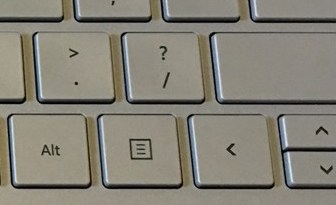Emacs Keys: Menu Key
On most Windows keyboards, there's the ▤ Menu key, also known as App key. This page shows you how to use that key in emacs, on linux or Mac or Windows.

Menu key on Microsoft Windows
On Microsoft Windows, by default, the menu key does nothing.
Under Windows, the menu key has the syntax "<apps>"
You can set it to do execute-extended-command
;; make the menu key do M-x (when (eq system-type 'windows-nt) (global-set-key (kbd "<apps>") 'execute-extended-command))
;; make the menu key do M-x ;; emacs 29 new keybinding syntax (when (eq system-type 'windows-nt) (keymap-global-set "<apps>" 'execute-extended-command))
Menu Key in Linux
In Linux GNU emacs, by default, ▤ Menu key invokes execute-extended-command
Under linux, the menu key has the syntax "<menu>"
Menu key on Mac
On Mac OS X, if you are using a Windows keyboard, the ▤ Menu key sends Ctrl+p by default.
How to fix menu key on the Mac?
Use a keyboard tool to remap key at operating system level. [see Mac: Keyboard Software Guide]